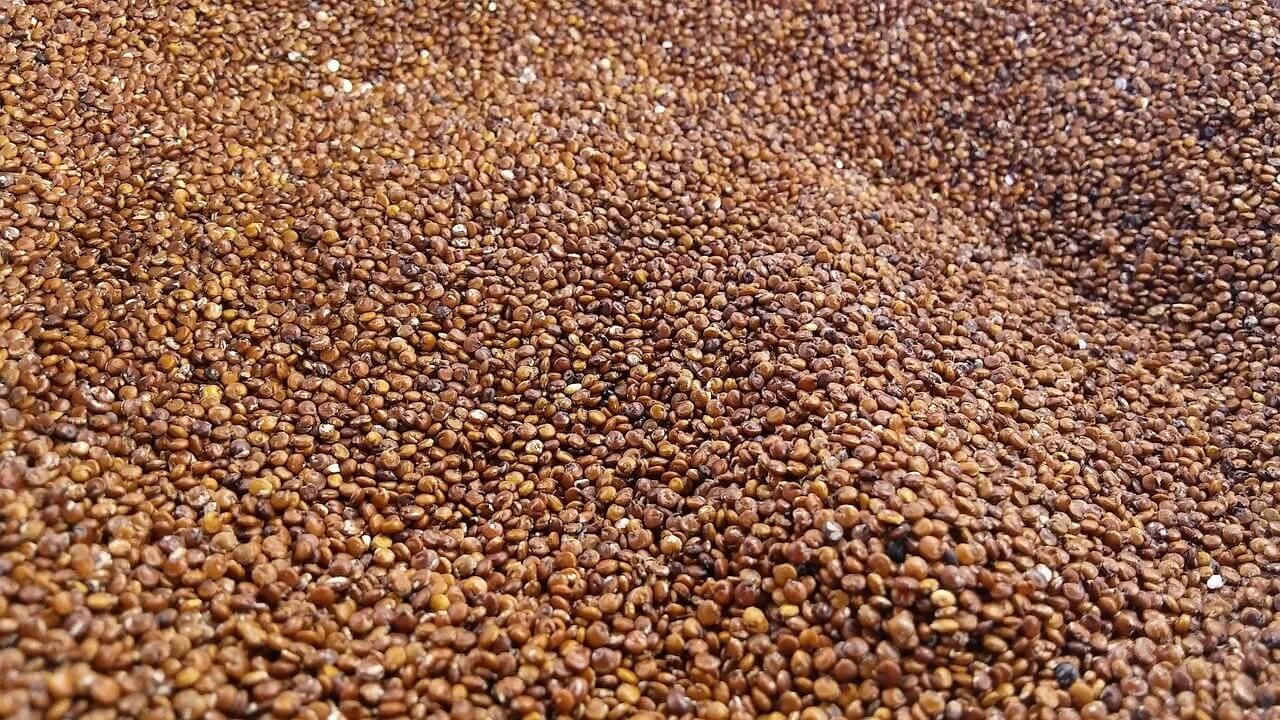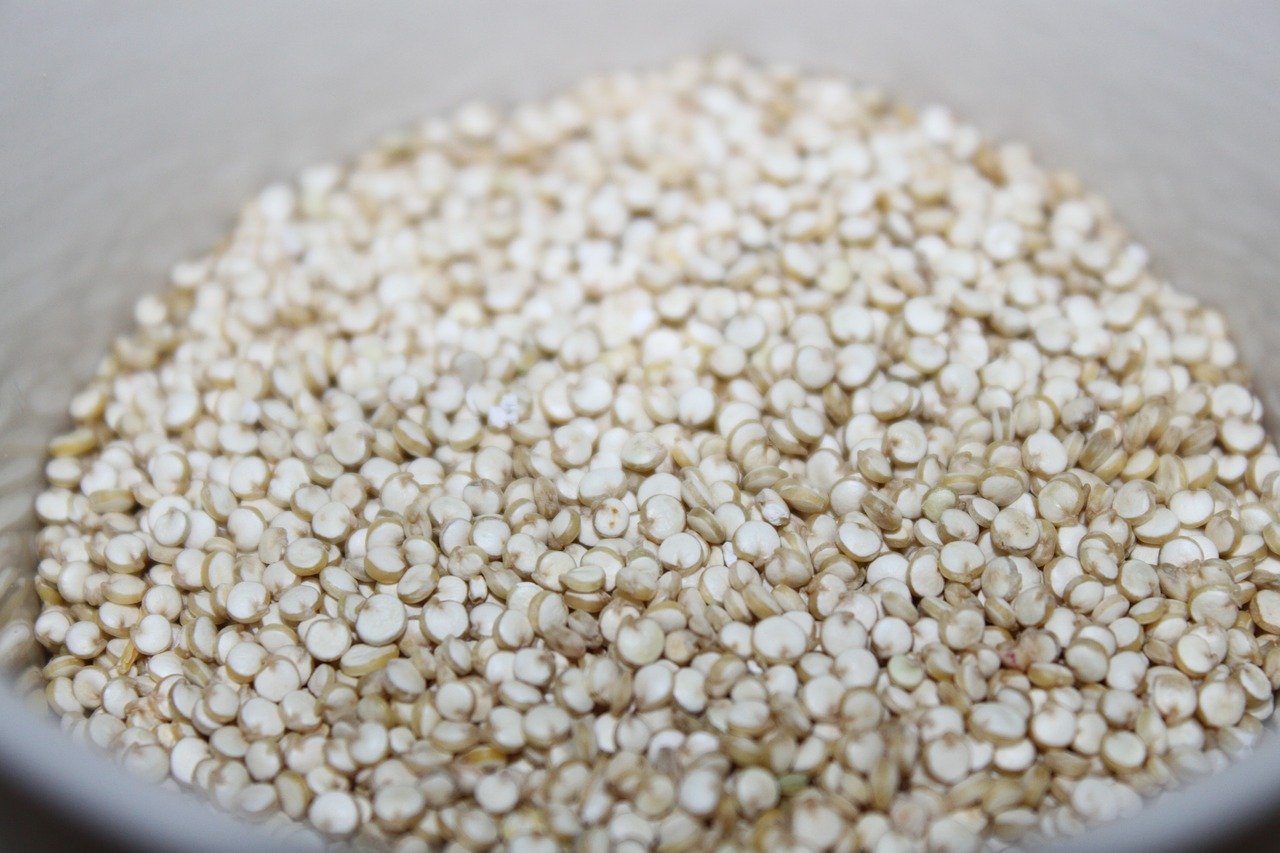Quinoa is a superfood that most homesteaders can grow for themselves. It won’t produce huge amounts of quinoa unless you have a good amount of area to dedicate to growing it. But, since quinoa isn’t the main dish most of the time, a small plot will be useful for those who are looking for the healthiest quinoa they can get from the land. Read on to learn more on how to harvest quinoa.
What You'll Learn Today
Growing Quinoa To Maturity

Growing quinoa isn’t complicated. It is a hardy plant that likes temperatures above freezing and below 90 degrees Fahrenheit. This makes it great for a Spring planting that’s ready to harvest in Autumn.
But, how do you know when quinoa is mature enough to harvest the seeds? Simply looking at the plant will give you a good idea of how close it is to maturity. The leaves will turn yellow and red and start to fall off. The seeds themselves will become so hard that squeezing them between your fingernails won’t leave a dent.
When you reach that state, your quinoa is ready to be picked. This is typically right after the first frost of the season. But, if you are in for some wet weather that could harm the crop yield, you can harvest early and dry indoors away from the weather.
Now, how do you harvest and process quinoa?
How To Harvest Quinoa By Hand
Quinoa harvest season starts by clipping off the seed heeds from each quinoa plant, ensuring you leave a small amount of stalk. Each seed head will need to be hung upside or placed on drying racks with plenty of airflow to dry out the plant material fully.
If you want to hand your seed heads, simply tie a piece of twine to your stalks and hang them from a clothes hanger in a cool, dry location.
If you want to lay them out to dry, you can use drying racks in an area that is dry but still has plenty of airflow. You can make drying racks with a few 2x4s and hardware cloth if you don’t have any on hand. They are useful for drying all kinds of crops on the homestead.
Now that you have dried seed heads, you are ready to process the quinoa to be ready to use and/or store.
How To Process Quinoa
So far, growing and harvesting have been easy. But, how do you process Quinoa? Is it going to be time-consuming or require a lot of equipment?
Not at all!
You can thresh your quinoa seeds from seed heads by hand. You can rub the seed heads over a bucket to release the seeds and allow them to collect in the bucket.
Or, you can thresh them more aggressively by bashing them against the bucket sides, again allowing the seeds to drop into the bucket.
Next, you have to winnow the plant material away from the quinoa seeds.
You can do this in front of a small fan or outside on a windy day. Pour your seeds back and forth between two bowls or buckets. The wind will blow away the lighter plant material while letting the seeds to fall back into the other bowl.
This process only takes a couple of tries, depending on how aggressive you are with the wind.
Lastly, you need to rinse the saponins off of the quinoa before it is edible. Saponins are protective compounds that coat the seeds and dissuade birds and other animals from eating the tasty seeds.
You can rinse the saponins off by running cold water over the quinoa in a coriander. Once the water runs clear and is free from bubbles, you have done enough to remove the saponins. You can play it safe and run water over the seeds longer to ensure you got it all off, as the flavor of saponins is off-putting.
Lastly, you need to dry your seeds again. Lay them out on a flat surface and stir them regularly to encourage even drying.
After they are dry, you can toast them, store them, or cook them right away to enjoy your harvest!
FAQs

Can I Grow Quinoa In My Garden?
Quinoa grows in USDA zones 4-10. If you are in any of these climates, you can grow quinoa in your garden for sure!
Are Quinoa Leaves Edible?
Yes, the young tender leaves can be harvested and used similarly to spinach, which is a relative of quinoa.
How Much Quinoa Does One Plant Produce?
The quality of your soil and the growing climate will affect the yield per plant. Somewhere between 1-6 ounces of quinoa per plant is the range typically seen. Purdue has a good reference for commercial yields for those interested in growing bulk quinoa.
What Season Does Quinoa Grow In?
Quinoa grows best when temperatures are above freezing and below 90 degrees Fahrenheit. For most climates, this means a Spring planting for a Fall harvest.
To Harvest Quinoa, You Have To Plant Now!
Quinoa may seem like a rare food to have on the homestead, but the ease of growing and harvesting quinoa makes it a great choice next growing season.
If you have enough land to dedicate to quinoa crops, you can grow enough for your household and your livestock as a supplement or replacement for expensive grain-based foods that you have to purchase away from the homestead!
Do I have to rinse the quinoa and then dry it again or can I just store it and then rinse it well right before cooking it as I would with store bought quinoa?